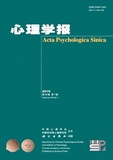Long-term rigorous musical training changes the brain structure and function, which impacts speech processing. Many studies have demonstrated that subcortical and cortical neural plasticity interact to give musicians linguistic advantages, allowing them to construct more elaborate perceptions of speech signals than non-musicians. There is ample empirical support for integrative processing at the end of a sentence. Studies have found that participants completed integrative processing of syntactic or semantic information at the end of a sentence containing an earlier syntactic or semantic violation. As speech rhythms play an important role in establishing the lexical, syntactic, and semantic representation of sentences, is it necessary for listeners to integrate rhythm at the end of sentence containing an earlier rhythm violation? Further, it remains unknown whether and (if yes) how musical training contributes to this process. The present ERP study used the rhyming judgment task to explore these questions using Chinese poems.
We used 160 unfamiliar, seven-character quatrains as experimental materials, with the last syllable (that is, targets) in the second line of the quatrain either appropriate or deviating from the appropriate syllable in tone, vowel, or both. Fifty undergraduates participated in this experiment. A total of 25 were musicians (9 males, mean age 20.56) with more than 10 years of formal music training who started at 7 years old or younger. The other 25 were non-musicians (9 males, mean age 20.84) who had never received any formal music training. Both were told to listen carefully and complete a ‘‘yes’’ or ‘‘no’’ judgment task on the appropriateness of the metrical feet. The EEG was recorded using 64 electrodes placed according to the international extended 10-20 system. The continuous EEG data were segmented into epochs of -200 to 1000 ms relative to the onset of the last syllable of each quatrain. The ERPs were analyzed and compared between conditions at time windows of 100~300 ms and 300~750 ms after the onset of the last syllable.
The behavioral results indicated that average accuracy rate in rhyming judgment task for musicians (83.24%, SE = 6.64%) was not significantly different from nonmusicians (82.64%, SE = 9.15%), t(48) = 0.27, p = 0.791. However, musicians responded faster when the tone was inappropriate compared to the appropriate condition, F(1, 48) = 16.88, p < 0.001, ηp 2= 0.26. ERP results indicated that during 100-300 ms the interaction between Subject, Vowel and Tone was significant in the midline, F(1, 48) = 7.59, p = 0.008, ηp 2 = 0.14, and lateral areas, F(1, 48) = 7.54, p = 0.008, ηp 2 = 0.14. Simple effect analysis indicated that for musicians, the inappropriate vowel elicited larger positivities than the appropriate vowel when the tone was appropriate [midline: F(1, 48) = 9.84, p = 0.003, ηp 2= 0.17; lateral: F(1, 48) = 15.41, p < 0.001, ηp 2= 0.24]; the inappropriate tone elicited larger positivities than the appropriate tone when the vowel was appropriate[midline: F(1, 48) = 3.80, p = 0.057, ηp 2 = 0.07; lateral: F(1, 48) = 7.27, p = 0.010, ηp 2 = 0.13]. Besides, the inappropriate tone elicited smaller positivities than the appropriate tone when the vowel was inappropriate[midline: F(1, 48) = 10.68, p = 0.002, ηp 2 = 0.18; lateral: F(1, 48) = 7.37, p = 0.009, ηp 2 = 0.13]. However, for nonmusicians, no significant difference was found in this time window (ps > 0.1). During 300-750 ms, we found that the interaction between Subject, Vowel and Tone was significant in the midline, F(1, 48) = 6.66, p = 0.013, ηp 2 = 0.12, and lateral areas, F(1, 48) = 5.60, p = 0.022, ηp 2 = 0.10. Simple effect analysis indicated that for musicians, the inappropriate vowel elicited larger negativities than the appropriate vowel when the tone was inappropriate [midline: F(1, 48) = 5.14, p = 0.028, ηp 2 = 0.10; lateral: F(1, 48) = 2.92, p = 0.094, ηp 2 = 0.06], and the inappropriate tone elicited larger negativities than the appropriate tone when the vowel was inappropriate[midline: F(1, 48) = 12.94, p = 0.001, ηp 2 = 0.21; lateral: F(1, 48) = 9.65, p = 0.003, ηp 2 = 0.17]. However, for nonmusicians, the inappropriate vowel elicited larger negativities than the appropriate vowel when the tone was appropriate [midline: F(1, 48) = 15.07, p < 0.001, ηp 2 = 0.24; lateral: F(1, 48) = 12.04, p = 0.001, ηp 2 = 0.20], while the inappropriate tone elicited larger negativities than the appropriate tone when the vowel was appropriate[midline: F(1, 48) = 10.88, p = 0.002, ηp 2 = 0.19; lateral: F(1, 48) = 8.27, p = 0.006, ηp 2 = 0.15].
In summary, the current study found that both musicians and non-musicians completed rhythm integrative processing at the end of sentence containing an earlier rhythm violation that was reflected by a late negative effect (during 300~750 ms). More importantly, through years of musical training, the musicians were more sensitive and faster at the integrative processing of rhythm information as reflected by an early positive component during 100~300 ms. In line with the behavioral data, the musicians developed increased sensitivity to tone variations during both early and late time windows. Taken together, both musicians and non-musicians completed the integrative processing of rhythm information at the end of quatrains, whereas the musicians were more sensitive and faster.




